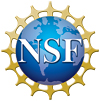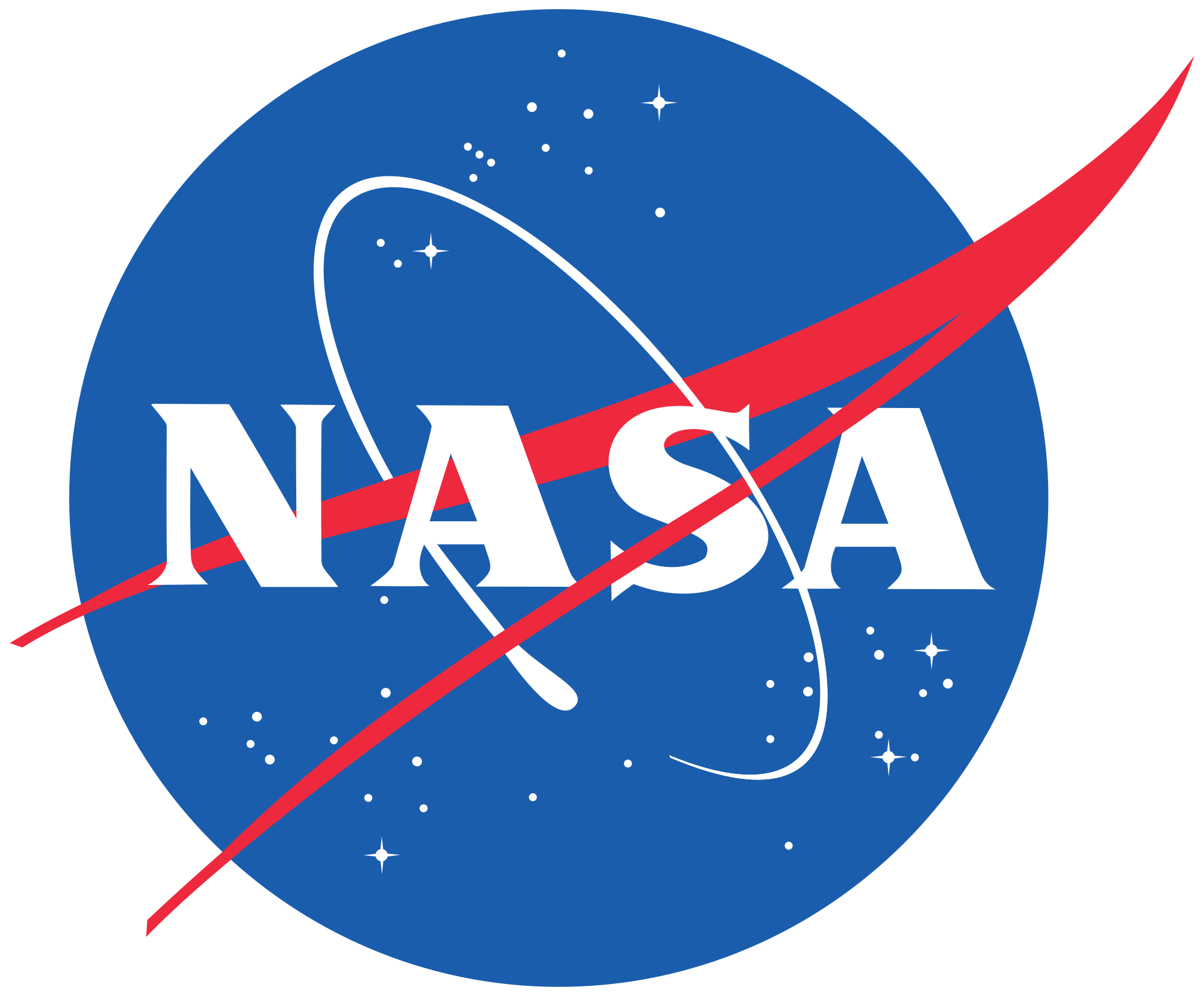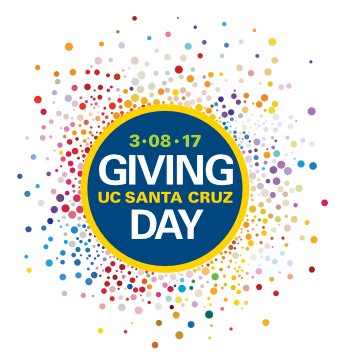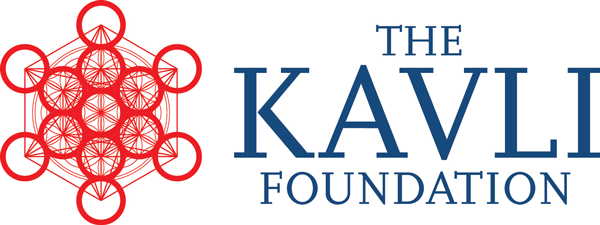Press
First observations of merging neutron stars mark a new era in astronomy
UC Santa Cruz team made the first ever observations of a visible event linked to the detection of gravitational waves, using the small Swope Telescope in Chile
SANTA CRUZ, CA--Two months ago, the Advanced Laser Interferometer Gravitational-Wave Observatory (LIGO) notified astronomers around the world of the possible detection of gravitational waves from the merger of two neutron stars. From that moment on August 17, the race was on to detect a visible counterpart, because unlike the colliding black holes responsible for LIGO's four previous detections of gravitational waves, this event was expected to produce a brilliant explosion of visible light and other types of radiation.
A small team led by Ryan Foley, an assistant professor of astronomy and astrophysics at UC Santa Cruz, was the first to find the source of the gravitational waves, located in a galaxy 130 million light-years away called NGC 4993. Foley's team captured the first images of the event with the 1-meter Swope Telescope at the Carnegie Institution's Las Campanas Observatory in Chile.
"This is a huge discovery," Foley said. "We're finally connecting these two different ways of looking at the universe, observing the same thing in light and gravitational waves, and for that alone this is a landmark event. It's like being able to see and hear something at the same time."
Theoretical astrophysicist Enrico Ramirez-Ruiz, professor and chair of astronomy and astrophysics at UC Santa Cruz and a member of Foley's team, said the observations have opened a new window into understanding the physics of neutron star mergers. Among other things, the results could resolve a hotly debated question about the origins of gold and other heavy elements in the universe, which Ramirez-Ruiz has been studying for years.
"I think this can prove our idea that most of these elements are made in neutron star mergers," he said. "We are seeing the heavy elements like gold and platinum being made in real time."
Foley's team is publishing four papers October 16 in Science based on their observations and analysis, as well as three papers in Astrophysical Journal Letters, and they are coauthors of several more papers in Nature and other journals, including two major papers led by the LIGO collaboration. The key Science papers include one presenting the discovery of the first optical counterpart to a gravitational wave source, led by UCSC graduate student David Coulter, and another, led by postdoctoral fellow Charles Kilpatrick, presenting a state-of-the-art comparison of the observations with theoretical models to confirm that it was a neutron-star merger. Two other Science papers were led by Foley's collaborators at the Carnegie Institution for Science.
By coincidence, the LIGO detection came on the final day of a scientific workshop on "Astrophysics with gravitational wave detections," which Ramirez-Ruiz had organized at the Niels Bohr Institute in Copenhagen and where Foley had just given a talk. "I wish we had filmed Ryan's talk, because he was so gloomy about our chances to observe a neutron star merger," Ramirez-Ruiz said. "But then he went on to outline his strategy, and it was that strategy that enabled his team to find it before anyone else."
Foley's strategy involved prioritizing the galaxies within the search field indicated by the LIGO team, targeting those most likely to harbor binary pairs of neutron stars, and getting as many of those galaxies as possible into each field of view. Other teams covered the search field more methodically, "like mowing the lawn," Foley said. His team found the source in the ninth field they observed, after waiting 10 hours for the sun to set in Chile.
"As soon as the sun went down, we started looking," Foley said. "By finding it as quickly as we did, we were able to build up a really nice data set."
He noted that the source was bright enough to have been seen by amateur astronomers, and it likely would have been visible from Africa hours before it was visible in Chile. Gamma rays emitted by the neutron star merger were detected by the Fermi Gamma-ray Space Telescope at nearly the same time as the gravitational waves, but the Fermi data gave no better information about the location of the source than LIGO did.
Foley's team took the first image of the optical source 11 hours after the LIGO detection and, after confirming their discovery, announced it to the astronomy community an hour later. Dozens of other teams quickly followed up with observations from other telescopes. Foley's team also obtained the first spectra of the source with the Magellan Telescopes at Carnegie's Las Campanas Observatory.
The gravitational wave source was named GW170817, and the optical source was named Swope Supernova Survey 2017a (SSS17a). By about seven days later, the source had faded and could no longer be detected in visible light. While it was visible, however, astronomers were able to gather a treasure trove of data on this extraordinary astrophysical phenomenon.
"It's such a rich data set, the amount of science to come from this one thing is incredible," Ramirez-Ruiz said.
Neutron stars are among the most exotic forms of matter in the universe, consisting almost entirely of neutrons and so dense that a sugar cube of neutron star material would weigh about a billion tons. The violent merger of two neutron stars ejects a huge amount of this neutron-rich material, powering the synthesis of heavy elements in a process called rapid neutron capture, or the "r-process."
The radiation this emits looks nothing like an ordinary supernova or exploding star. Astrophysicists like Ramirez-Ruiz have developed numerical models to predict what such an event, called a kilonova, would look like, but this is the first time one has actually been observed in such detail. Kilpatrick said the data fit remarkably well with the predictions of theoretical models.
"It doesn't look like anything we've ever seen before," he said. "It got very bright very quickly, then started fading rapidly, changing from blue to red as it cooled down. It's completely unprecedented."
A theoretical synthesis of data from across the spectrum, from radio waves to gamma rays, was led by Ariadna Murguia-Berthier, a graduate student working with Ramirez-Ruiz, and published in Astrophysical Journal Letters, providing a coherent theoretical framework for understanding the full range of observations. Their analysis indicates, for example, that the merger triggered a relativistic jet (material moving at near the speed of light) that generated the gamma-ray burst, while matter torn from the merger system and ejected at lower speeds drove the r-process and the kilonova emissions at ultraviolet, optical, and infrared wavelengths.
Ramirez-Ruiz has calculated that a single neutron-star merger can generate an amount of gold equal to the mass of Jupiter. The team's calculations of heavy element production by SSS17a suggest that neutron star mergers can account for about half of all the elements heavier than iron in the universe.
The detection came just one week before the end of LIGO's second observing run, which had begun in November 2016. Foley was in Copenhagen, taking advantage of his one afternoon off to visit Tivoli Gardens with his partner, when he got a text from Coulter alerting him to the LIGO detection. At first, he thought it was a joke, but soon he was pedaling his bicycle madly back to the University of Copenhagen to begin working with his team on a detailed search plan.
"It was crazy. We barely got it done, but our team was incredible and it all came together," Foley said. "We got lucky, but luck favors the prepared, and we were ready."
Foley's team at UC Santa Cruz includes Ramirez-Ruiz, Coulter, Kilpatrick, Murguia-Berthier, professor of astronomy and astrophysics J. Xavier Prochaska, postdoctoral researcher Yen-Chen Pan, and graduate students Matthew Siebert, Cesar Rojas-Bravo and Enia Xhakaj. Other team members include Maria Drout, Ben Shappee, and Tony Piro at the Observatories of the Carnegie Institution for Science; UC Berkeley astronomer Daniel Kasen; and Armin Rest at the Space Telescope Science Institute.
Their team is called the One-Meter, Two-Hemisphere (1M2H) Collaboration because they use two one-meter telescopes, one in each hemisphere: the Nickel Telescope at UC's Lick Observatory and Carnegie's Swope Telescope in Chile. The UCSC group is supported in part by the National Science Foundation, Gordon and Betty Moore Foundation, Heising-Simons Foundation, and Kavli Foundation; fellowships for Foley from the Alfred P. Sloan Foundation and the David and Lucile Packard Foundation; a Niels Bohr Professorship for Ramirez-Ruiz from the Danish National Research Foundation; and the UC Institute for Mexico and the United States (UC MEXUS).
####
Neutron stars, gravitational waves, and all the gold in the universe
Astronomer Ryan Foley says observing the explosion of two colliding neutron stars--the first visible event ever linked to gravitational waves--is probably the biggest discovery he'll make in his lifetime. That's saying a lot for a young assistant professor who presumably has a long career still ahead of him.
So what makes this strange cataclysm in another galaxy so exciting to astronomers? And what the heck is a neutron star, anyway?
A neutron star forms when a massive star runs out of fuel and explodes as a supernova, throwing off its outer layers and leaving behind a collapsed core composed almost entirely of neutrons. Neutrons are the uncharged particles in the nucleus of an atom, where they are bound together with positively charged protons. In a neutron star, they are packed together just as densely as in the nucleus of an atom, resulting in an object with one to three times the mass of our sun but only about 12 miles wide.
"Basically, a neutron star is a gigantic atom with the mass of the sun and the size of a city like San Francisco or Manhattan," said Foley, an assistant professor of astronomy and astrophysics at UC Santa Cruz.
These objects are so dense, a cup of neutron star material would weigh as much as Mount Everest, and a teaspoon would weigh a billion tons. It's as dense as matter can get without collapsing into a black hole.
The merger
Like other stars, neutron stars sometimes occur in pairs, orbiting each other and gradually spiraling inward. Eventually, they come together in a catastrophic merger that distorts space and time (creating gravitational waves) and emits a brilliant flare of electromagnetic radiation, including visible, infrared, and ultraviolet light, x-rays, gamma rays, and radio waves. Merging black holes also create gravitational waves, but there's nothing to be seen because no light can escape from a black hole.
Foley's team was the first to observe the light from a neutron star merger that took place on August 17 and was detected by the Advanced Laser Interferometer Gravitational-Wave Observatory (LIGO). Now, for the first time, scientists can study both the gravitational waves (ripples in the fabric of space-time), and the radiation emitted from the violent merger of the densest objects in the universe.
It's that combination of data, and all that can be learned from it, that has astronomers and physicists so excited. The observations of this one event are keeping hundreds of scientists busy exploring its implications for everything from fundamental physics and cosmology to the origins of gold and other heavy elements.
All the gold in the universe
It turns out that the origins of the heaviest elements, such as gold, platinum, titanium—pretty much everything heavier than iron—has been an enduring conundrum. All the lighter elements have well-explained origins in the nuclear fusion reactions that make stars shine or in the explosions of stars (supernovae). Initially, astrophysicists thought supernovae could account for the heavy elements, too, but there have always been problems with that theory, says Enrico Ramirez-Ruiz, professor and chair of astronomy and astrophysics at UC Santa Cruz.
A theoretical astrophysicist, Ramirez-Ruiz has been a leading proponent of the idea that neutron star mergers are the source of the heavy elements. Building a heavy atomic nucleus means adding a lot of neutrons to it. This process is called rapid neutron capture, or the r-process, and it requires some of the most extreme conditions in the universe: extreme temperatures, extreme densities, and a massive flow of neutrons. A neutron star merger fits the bill.
Ramirez-Ruiz and other theoretical astrophysicists use supercomputers to simulate the physics of extreme events like supernovae and neutron star mergers. This work always goes hand in hand with observational astronomy. Theoretical predictions tell observers what signatures to look for to identify these events, and observations tell theorists if they got the physics right or if they need to tweak their models. The observations by Foley and others of the neutron star merger now known as SSS17a are giving theorists, for the first time, a full set of observational data to compare with their theoretical models.
According to Ramirez-Ruiz, the observations support the theory that neutron star mergers can account for all the gold in the universe, as well as about half of all the other elements heavier than iron.
Ripples in the fabric of space-time
Einstein predicted the existence of gravitational waves in 1916 in his general theory of relativity, but until recently they were impossible to observe. LIGO's extraordinarily sensitive detectors achieved the first direct detection of gravitational waves, from the collision of two black holes, in 2015. Gravitational waves are created by any massive accelerating object, but the strongest waves (and the only ones we have any chance of detecting) are produced by the most extreme phenomena.
Two massive compact objects — such as black holes, neutron stars, or white dwarfs — orbiting around each other faster and faster as they draw closer together are just the kind of system that should radiate strong gravitational waves. Like ripples spreading in a pond, the waves get smaller as they spread outward from the source. By the time they reached Earth, the ripples detected by LIGO caused distortions of space-time thousands of times smaller than the nucleus of an atom.
The rarefied signals recorded by LIGO's detectors not only prove the existence of gravitational waves, they also provide crucial information about the events that produced them. Combined with the telescope observations of the neutron star merger, it's an incredibly rich set of data.
LIGO can tell scientists the masses of the merging objects and the mass of the new object created in the merger, which reveals whether the merger produced another neutron star or a more massive object that collapsed into a black hole. To calculate how much mass was ejected in the explosion, and how much mass was converted to energy, scientists also need the optical observations from telescopes. That's especially important for quantifying the nucleosynthesis of heavy elements during the merger.
LIGO can also provide a measure of the distance to the merging neutron stars, which can now be compared with the distance measurement based on the light from the merger. That's important to cosmologists studying the expansion of the universe, because the two measurements are based on different fundamental forces (gravity and electromagnetism), giving completely independent results.
"This is a huge step forward in astronomy," Foley said. "Having done it once, we now know we can do it again, and it opens up a whole new world of what we call 'multi-messenger' astronomy, viewing the universe through different fundamental forces."
— By Tim Stephens
####
Youth Power
Graduate students and post-doctoral scholars at UC Santa Cruz played key roles in the dramatic discovery and analysis of colliding neutron stars
Astronomer Ryan Foley leads a team of young graduate students and postdoctoral scholars who have pulled off an extraordinary coup. Following up on the detection of gravitational waves from the violent merger of two neutron stars, Foley's team was the first to find the source with a telescope and take images of the light from this cataclysmic event. In so doing, they beat much larger and more senior teams with much more powerful telescopes at their disposal.
"We're sort of the scrappy young upstarts who worked hard and got the job done," said Foley, an untenured assistant professor of astronomy and astrophysics at UC Santa Cruz.
The discovery on August 17, 2017, has been a scientific bonanza, yielding over 100 scientific papers from numerous teams investigating the new observations. Foley's team is publishing seven papers, each of which has a graduate student or postdoc as the first author.
"I think it speaks to Ryan's generosity and how seriously he takes his role as a mentor that he is not putting himself front and center, but has gone out of his way to highlight the roles played by his students and postdocs," said Enrico Ramirez-Ruiz, professor and chair of astronomy and astrophysics at UC Santa Cruz and the most senior member of Foley's team.
"Our team is by far the youngest and most diverse of all of the teams involved in the follow-up observations of this neutron star merger," Ramirez-Ruiz added.
Charles Kilpatrick, a 29-year-old postdoctoral scholar, was the first person in the world to see an image of the light from colliding neutron stars. He was sitting in an office at UC Santa Cruz, working with first-year graduate student Cesar Rojas-Bravo to process image data as it came in from the Swope Telescope in Chile. To see if the Swope images showed anything new, he had also downloaded "template" images taken in the past of the same galaxies the team was searching.
"In one image I saw something there that was not in the template image," Kilpatrick said. "It took me awhile to realize the ramifications of what I was seeing. This opens up so much new science, it really marks the beginning of something that will continue to be studied for years down the road."
At the time, Foley and most of the others in his team were at a meeting in Copenhagen. When they found out about the gravitational wave detection, they quickly got together to plan their search strategy. From Copenhagen, the team sent instructions to the telescope operators in Chile telling them where to point the telescope. Graduate student David Coulter played a key role in prioritizing the galaxies they would search to find the source, and he is the first author of the discovery paper published in Science.
"It's still a little unreal when I think about what we've accomplished," Coulter said. "For me, despite the euphoria of recognizing what we were seeing at the moment, we were all incredibly focused on the task at hand. Only afterward did the significance really sink in."
Just as Coulter finished writing his paper about the discovery, his wife went into labor, giving birth to a baby girl on September 30. "I was doing revisions to the paper at the hospital," he said.
It's been a wild ride for the whole team, first in the rush to find the source, and then under pressure to quickly analyze the data and write up their findings for publication. "It was really an all-hands-on-deck moment when we all had to pull together and work quickly to exploit this opportunity," said Kilpatrick, who is first author of a paper comparing the observations with theoretical models.
Graduate student Matthew Siebert led a paper analyzing the unusual properties of the light emitted by the merger. Astronomers have observed thousands of supernovae (exploding stars) and other "transients" that appear suddenly in the sky and then fade away, but never before have they observed anything that looks like this neutron star merger. Siebert's paper concluded that there is only a one in 100,000 chance that the transient they observed is not related to the gravitational waves.
Ariadna Murguia-Berthier, a graduate student working with Ramirez-Ruiz, is first author of a paper synthesizing data from a range of sources to provide a coherent theoretical framework for understanding the observations.
Another aspect of the discovery of great interest to astronomers is the nature of the galaxy and the galactic environment in which the merger occurred. Postdoctoral scholar Yen-Chen Pan led a paper analyzing the properties of the host galaxy. Enia Xhakaj, a new graduate student who had just joined the group in August, got the opportunity to help with the analysis and be a coauthor on the paper.
"There are so many interesting things to learn from this," Foley said. "It's a great experience for all of us to be part of such an important discovery."
— By Tim Stephens
####
Note to reporters: You may contact Ryan Foley at 510-388-3364 (cell) or foley@ucsc.edu, and Enrico Ramirez-Ruiz at 831-345-4117 (cell) or enrico@ucolick.org.
For more UCSC news, visit news.ucsc.edu.









